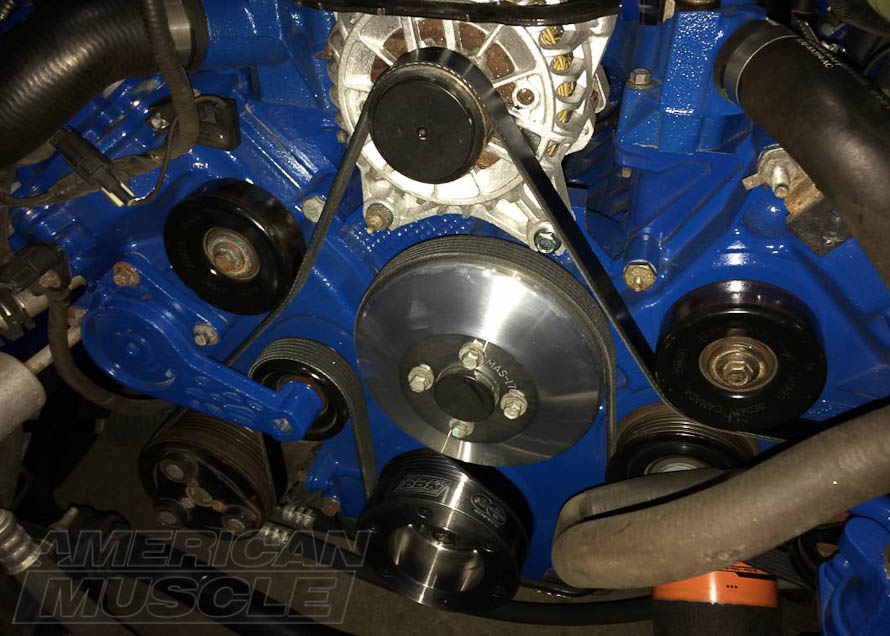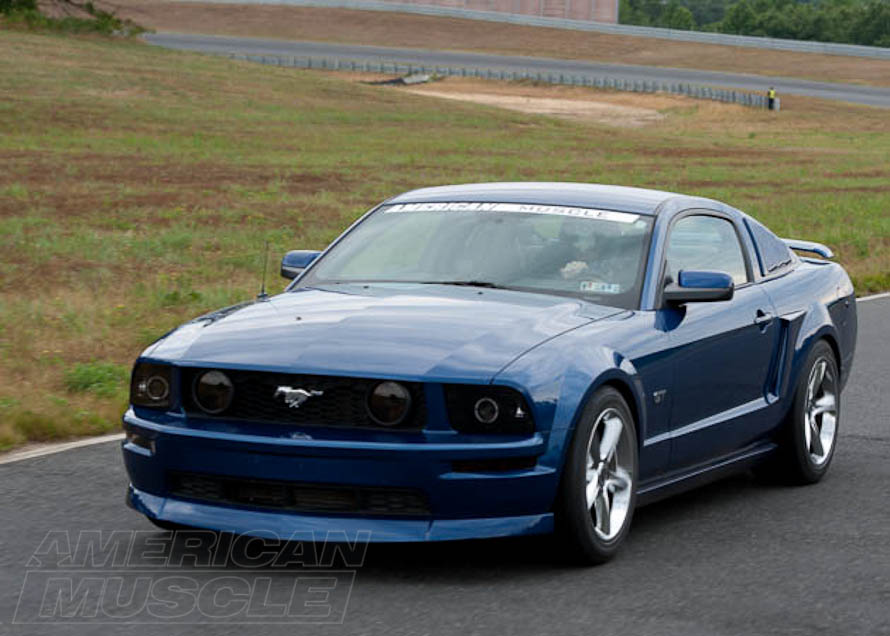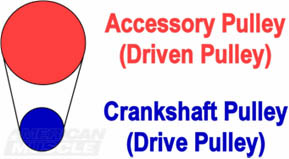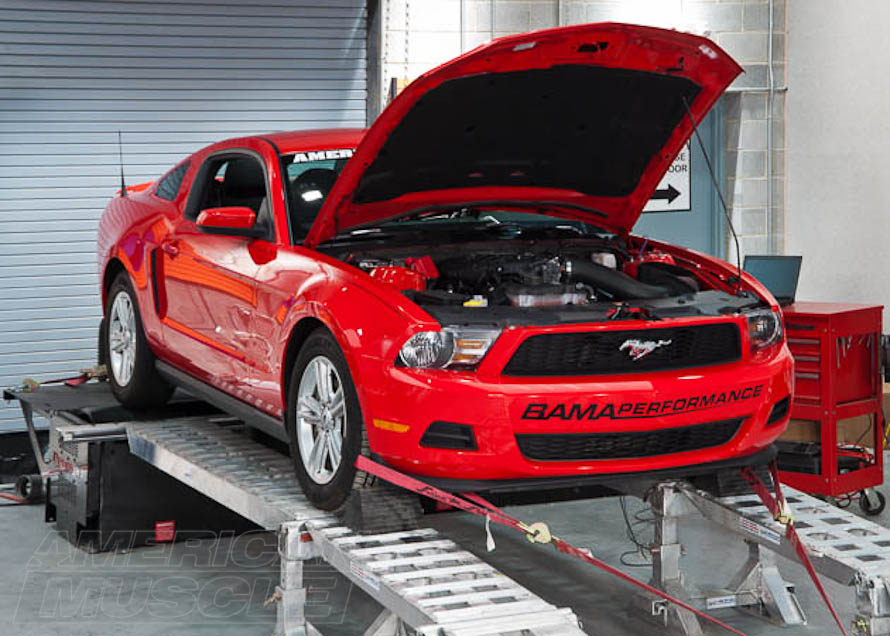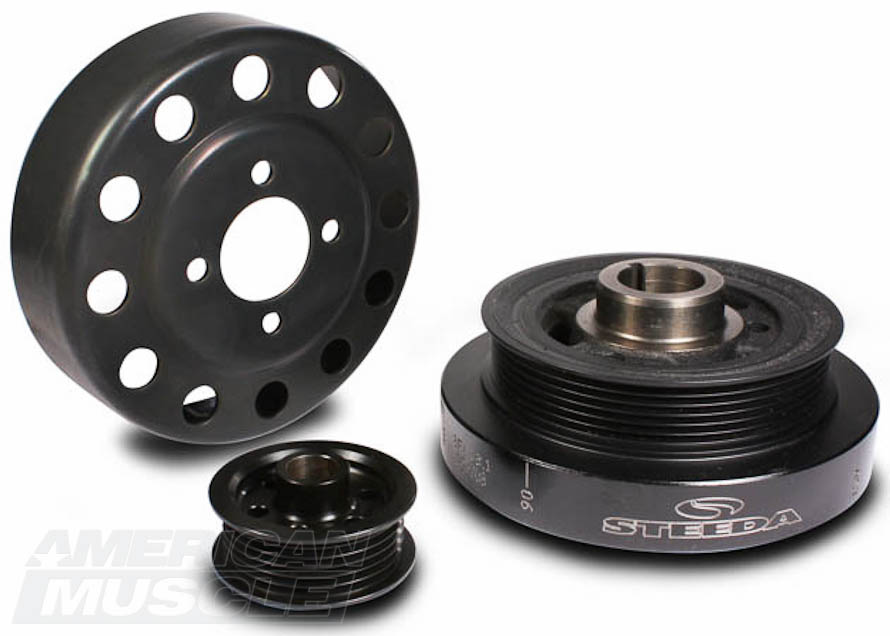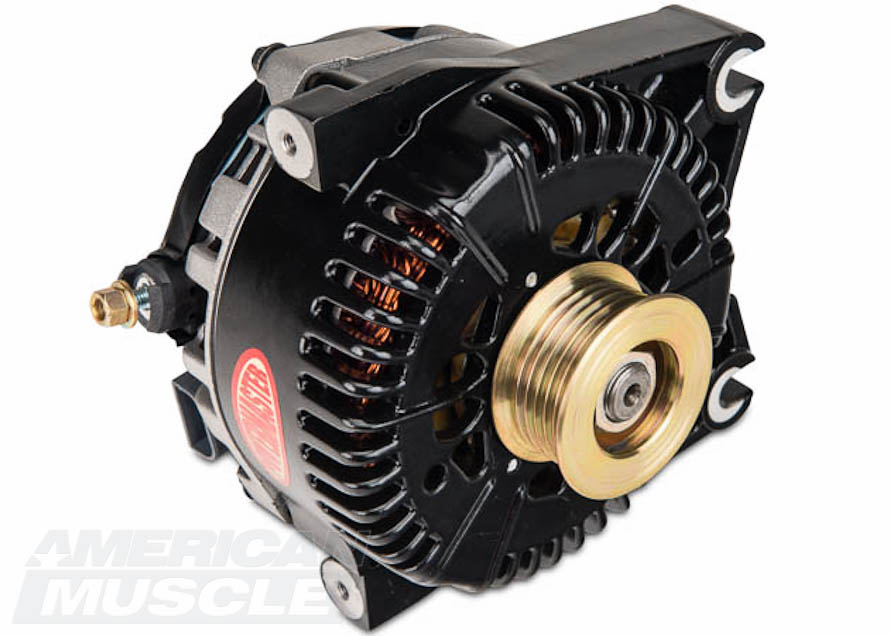So now that you understand how a set of underdrive pulleys work and you’re ready to place an order. Before you load up your Shopping Cart and whip out your credit card, first step back and analyze your situation a little.
For most automotive enthusiasts, underdrive pulleys should not cause any issues at all. This is due to the fact that auto manufacturers provide a certain level of accessory operation that exceeds normal needs. If you have installed aftermarket parts that would force the accessories roles to be more important, however, you may be utilizing more of that extra “buffer” than the manufacturer provides. A perfect example of this would be high-powered aftermarket stereo equipment, which can tax the factory alternator or even require a higher-powered alternator. So it’s important to weigh your particular situation first.
Since underdrive pulleys slow down the operation of the water pump and alternator, particularly at idle, overheating (rather, above average heating due to a diminished coolant flow rate at idle) and low voltage can occur if your Mustang is already showing signs of these problems before installing underdrive pulleys. If you’re concerned about this happening to you, make sure the cooling and charging systems are in tip-top shape. If either system is less than optimal in stock form, it is likely one of the above issues will show face at idle with underdrive pulleys installed. In a way, underdrive pulleys can weed out existing problems in the electrical and cooling systems
When it’s all said and done, most people will find that there is no downside to installing underdrive pulleys. For those enthusiasts, a pretty straightforward pulley swap is all that stands between them and a car that has an increased responsiveness, as well as a little more power!


